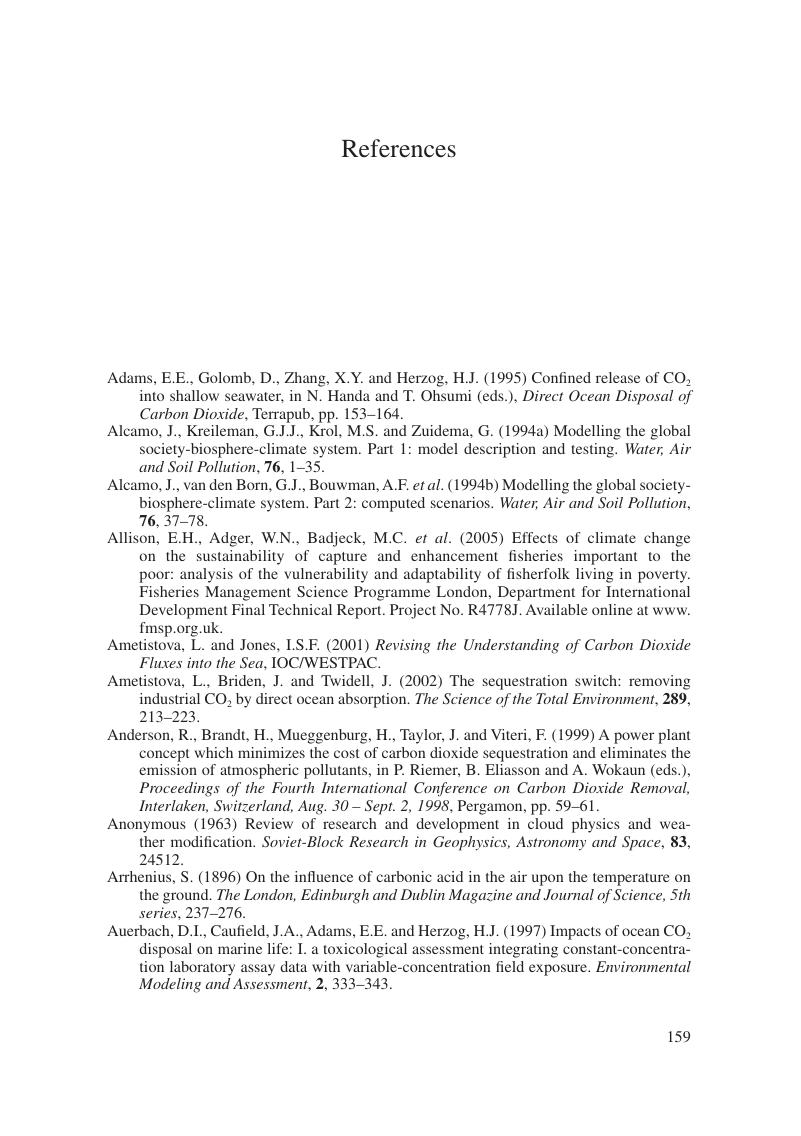Book contents
- Frontmatter
- Contents
- Preface
- Acknowledgments
- 1 The future greenhouse gas production
- 2 Changing energy efficiency
- 3 Zero-emission technologies
- 4 Geoengineering the climate
- 5 Ocean sequestration
- 6 Increasing land sinks
- 7 Adaptation
- 8 The past and the future
- Appendices
- Further reading
- References
- Index
- Plate section
- References
References
Published online by Cambridge University Press: 07 September 2011
- Frontmatter
- Contents
- Preface
- Acknowledgments
- 1 The future greenhouse gas production
- 2 Changing energy efficiency
- 3 Zero-emission technologies
- 4 Geoengineering the climate
- 5 Ocean sequestration
- 6 Increasing land sinks
- 7 Adaptation
- 8 The past and the future
- Appendices
- Further reading
- References
- Index
- Plate section
- References
Summary

- Type
- Chapter
- Information
- Engineering Strategies for Greenhouse Gas Mitigation , pp. 159 - 167Publisher: Cambridge University PressPrint publication year: 2011



